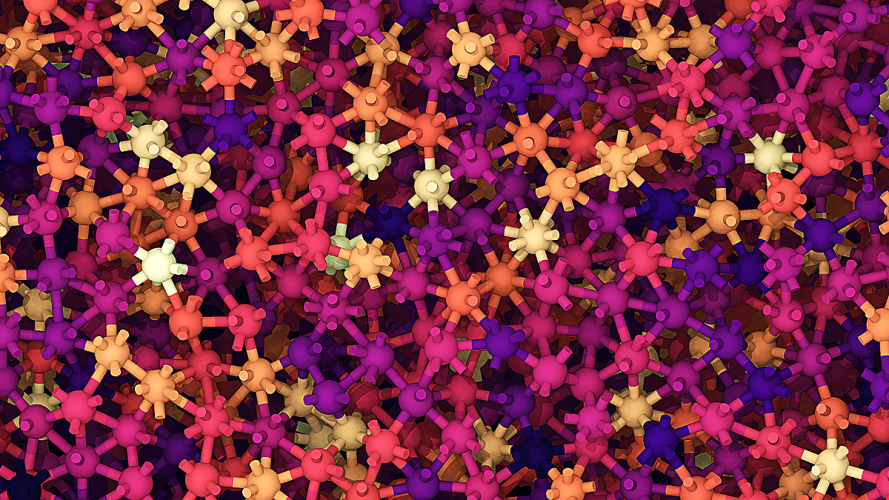
OHIO Distinguished Professor Drabold part of new research featured in Nature

Ohio University Distinguished Professor David Drabold is a coauthor on a new research paper published and featured on the cover of this week’s issue in Nature, the world’s leading multidisciplinary science journal.
University of Oxford professor Volker Deringer is the lead author of the paper, “Origins of structural and electronic transitions in disordered silicon.”
The properties of matter often change drastically under pressure, as bonds between atoms are broken and new ones are formed. The mechanisms behind such structural changes have been persistent challenges for even the most advanced experimental and simulation techniques.
In this week’s issue of Nature, Deringer, Drabold and collaborators report new insight into the structural and electronic transitions of disordered phases of silicon, obtained from computer simulations that are driven by atomistic machine-learning methods.
The team was able to describe the behavior of a system of 100,000 silicon atoms with quantum-mechanical accuracy. Their simulations reveal a complex series of transformations under pressure – finally leading to a nanocrystalline phase. In a wider picture, the authors’ work provides an example for the power of emerging machine-learning methods to solve challenging problems in physics, chemistry, and materials science.
Drabold carried out early quantum mechanical simulations on high pressure phases of amorphous silicon in 2001 and observed the abrupt collapse to the Very High Density Amorphous phase, but could say nothing more with the methods of the time.
“It was wonderful to contribute to this new and substantial advance in simulation of condensed matter. The Machine Learning techniques (due to the co-authors) will make a permanent mark on this field,” Drabold said.
Story courtesy of University of Oxford, with additions made by Ohio University.